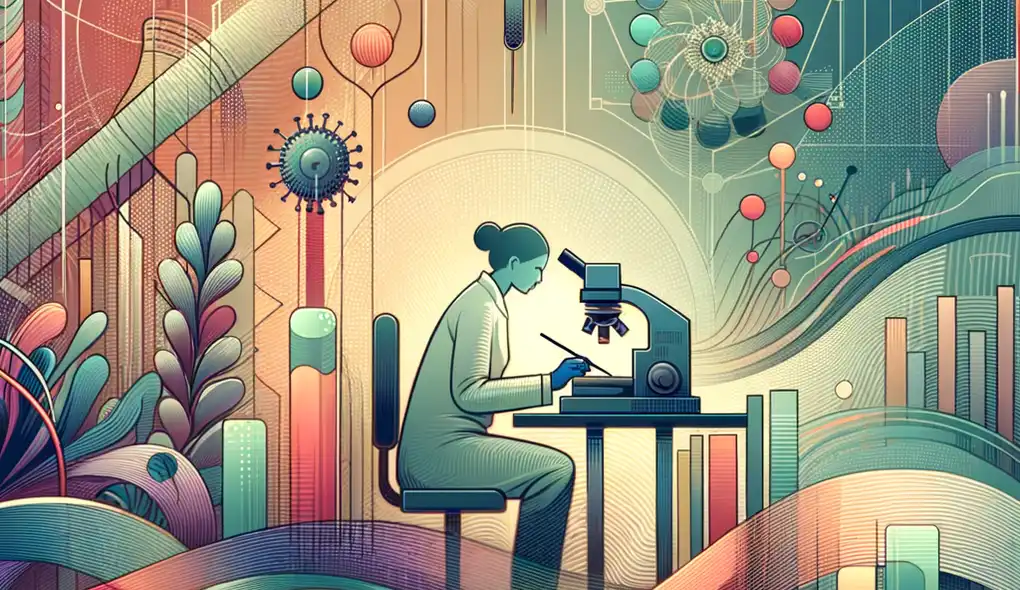Describe a challenging project or problem you encountered in microarray analysis. How did you approach it and what was the outcome?
Microarray Analyst Interview Questions
Sample answer to the question
One challenging project I encountered in microarray analysis was when I was tasked with analyzing a large dataset of gene expression in cancer patients. The dataset was complex and contained thousands of genes and samples, making it difficult to find meaningful patterns. To approach this project, I first conducted exploratory data analysis to identify outliers and potential issues with the data. Then, I implemented various normalization and statistical analysis techniques to identify differentially expressed genes. I also used machine learning algorithms to classify patients based on their gene expression profiles. The outcome of the project was the identification of several key genes that were highly associated with cancer progression, which contributed to further research and potential therapeutic targets.
A more solid answer
One of the most challenging projects I faced in microarray analysis was analyzing a microarray dataset of gene expression in patients with a rare neurodegenerative disorder. The dataset consisted of hundreds of samples and tens of thousands of genes, posing a significant computational and analytical challenge. To tackle this project, I first performed thorough quality control checks to ensure data integrity. I then applied various statistical methods, such as differential expression analysis and pathway enrichment analysis, to identify genes and biological pathways associated with the disorder. Additionally, I developed a custom pipeline using Python and R to automate the data preprocessing and analysis steps, saving significant time and ensuring reproducibility. The outcome of the project was the discovery of novel genes and pathways implicated in the disorder, which provided valuable insights for further research.
Why this is a more solid answer:
The solid answer provides more specific details about the challenging project, including the type of dataset and the specific statistical methods used. It also emphasizes the candidate's programming skills and ability to overcome computational challenges. However, it could still be improved by providing more information on the candidate's collaboration with the team and the impact of their findings.
An exceptional answer
In my previous role as a Senior Microarray Analyst, I encountered a highly challenging project in microarray analysis involving the investigation of gene expression changes in response to a novel drug therapy for a rare form of cancer. The dataset consisted of over 500 samples and encompassed multiple time points, making it a complex longitudinal analysis. To approach this project, I first collaborated with a team of oncologists, bioinformaticians, and statisticians to design a comprehensive analysis plan. We developed a multivariable linear mixed-effects model to account for the longitudinal nature of the data and control for confounding factors such as patient age and disease stage. Furthermore, I leveraged advanced machine learning techniques, including random forest and deep learning, to identify predictive gene expression signatures associated with treatment response. The outcome of the project was the identification of a subset of genes that showed significant differential expression and could potentially serve as biomarkers for treatment response. Our findings were published in a high-impact journal, contributing to the knowledge and understanding of this rare cancer type and potentially guiding personalized treatment decisions for patients.
Why this is an exceptional answer:
The exceptional answer provides a highly detailed and comprehensive response to the question. It describes a challenging project involving a complex dataset and highlights the candidate's collaboration with a multi-disciplinary team. The answer also showcases the candidate's proficiency in advanced statistical and machine learning techniques, as well as the impact of their findings through publication and potential clinical applications. Overall, this answer aligns well with the job description, demonstrating the candidate's expertise and leadership abilities in microarray analysis.
How to prepare for this question
- Familiarize yourself with various microarray analysis techniques, including data preprocessing, normalization, and statistical analysis methods.
- Stay updated with the latest advancements in microarray technology and bioinformatics tools.
- Gain experience in programming languages commonly used in microarray analysis, such as R, Python, or Perl.
- Develop strong collaboration and communication skills, as microarray analysis often involves working with multi-disciplinary teams.
What interviewers are evaluating
- Knowledge of microarray technology and data analysis
- Expertise in statistical data analysis and bioinformatics
- Strong programming skills in R, Python, or Perl
- Ability to work collaboratively in a multi-disciplinary team environment
Related Interview Questions
More questions for Microarray Analyst interviews